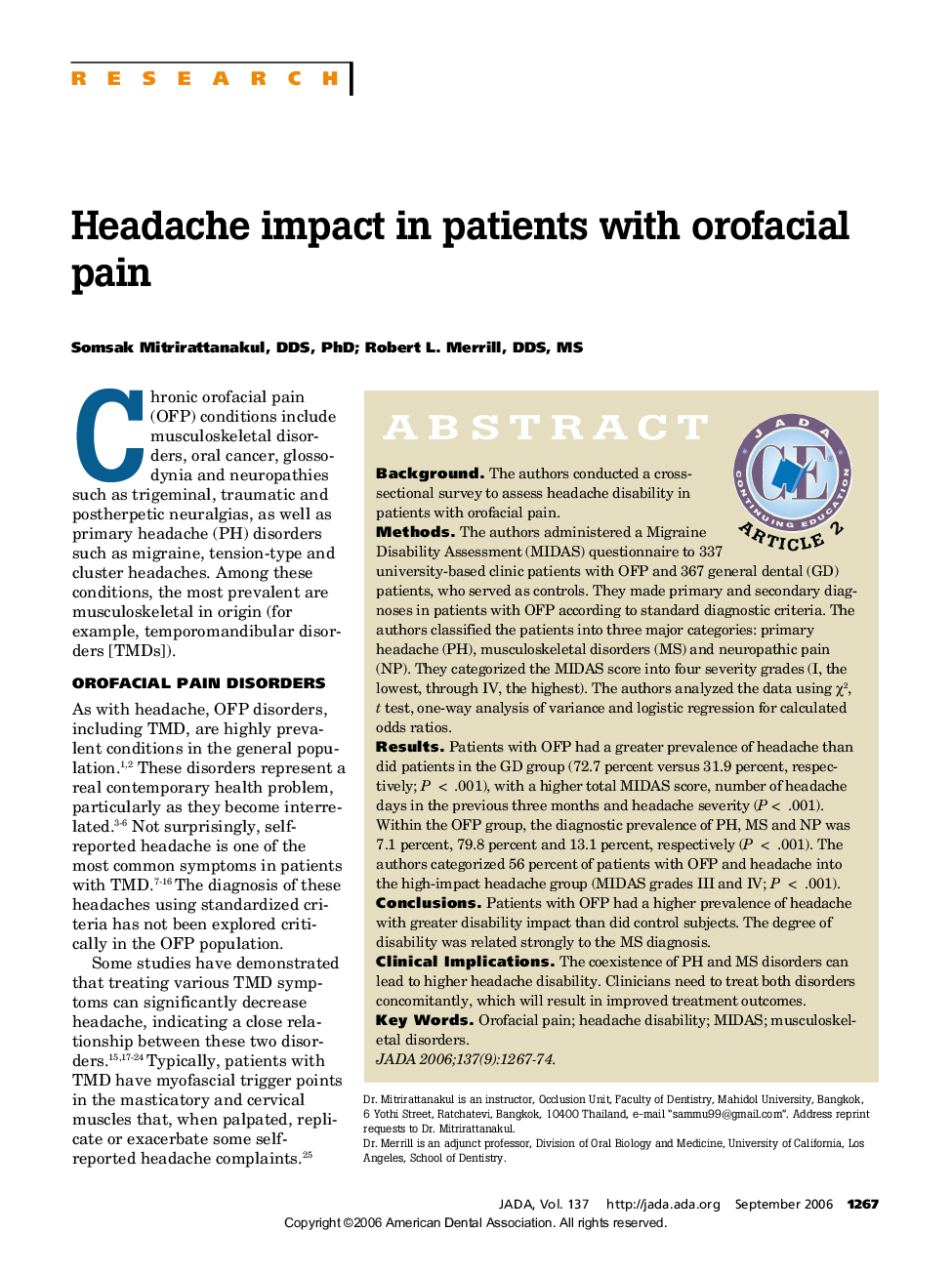| Article ID | Journal | Published Year | Pages | File Type |
|---|---|---|---|---|
| 3140057 | The Journal of the American Dental Association | 2006 | 8 Pages |
ABSTRACT BackgroundThe authors conducted a cross-sectional survey to assess headache disability in patients with orofacial pain.MethodsThe authors administered a Migraine Disability Assessment (MIDAS) questionnaire to 337 university-based clinic patients with OFP and 367 general dental (GD) patients, who served as controls. They made primary and secondary diagnoses in patients with OFP according to standard diagnostic criteria. The authors classified the patients into three major categories: primary headache (PH), musculoskeletal disorders (MS) and neuropathic pain (NP). They categorized the MIDAS score into four severity grades (I, the lowest, through IV, the highest). The authors analyzed the data using χ2, t test, one-way analysis of variance and logistic regression for calculated odds ratios.ResultsPatients with OFP had a greater prevalence of headache than did patients in the GD group (72.7 percent versus 31.9 percent, respectively; P < .001), with a higher total MIDAS score, number of headache days in the previous three months and headache severity (P < .001). Within the OFP group, the diagnostic prevalence of PH, MS and NP was 7.1 percent, 79.8 percent and 13.1 percent, respectively (P < .001). The authors categorized 56 percent of patients with OFP and headache into the high-impact headache group (MIDAS grades III and IV; P < .001).ConclusionsPatients with OFP had a higher prevalence of headache with greater disability impact than did control subjects. The degree of disability was related strongly to the MS diagnosis.Clinical ImplicationsThe coexistence of PH and MS disorders can lead to higher headache disability. Clinicians need to treat both disorders concomitantly, which will result in improved treatment outcomes.
